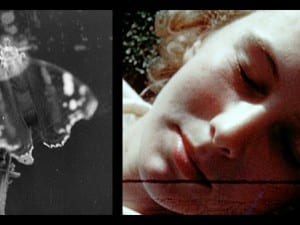In his Festival lecture The Culture of Violence in the Twentieth Century, Alan Kramer points out that, unlike the Germans, the English did not during World War I rely on prisoners of war as a labour force. Not only this, but English POWs were treated comparably well. As Professor of European History at Trinity College Dublin, Kramer is precisely one of those who, in the words of Albert Camus, “make history.” Yet as Festival Director Jonathan Mills quotes in full from Camus in his introductory statement in the Festival programme, “It is the destiny of the artist not to serve those who make history, but to serve those who are its victims.”
Only passingly does Kramer mention that the reason Britain had no need for a prisoner work force was that it was still in possession of a colonial one. It is only upon an audience member’s suggestion that Krame concedes that Britain’s relatively humane treatment of its prisoners of war could be attributed to the recent memory of its appalling treatment of these people during the Boer War. Culture and Conflict, the series of talks and discussions that form the linchpin of this year’s International Festival, provide invaluable context to the Great War it commemorates. However, many of the Festival’s performances endeavour to provide an alternate narrative; perhaps, to borrow Gayatri Chakravorty Spivak’s coinage, a subaltern one.
Somewhat predictably, Kramer posits WWI as a preliminary to the industrial-scale, ideologically-motivated warfare of 1939-45. South African artist Brett Bailey’s Exhibit B, on the other hand, follows the “Othering” that would inform Nazi ethnic supremacism to an obscurer source: namely, to Europe’s genocidal projects of colonialisation. Situating itself ‘somewhere between performance and exhibition’, Exhibit B revisits the only recently unthinkable notion of the “human zoo.” In it, three centuries’ worth of colonial and neo-colonial atrocities are recreated. However, these reproductions, ranging from a castrated Mau Mau man to a Congolese man holding a basket of human hands, are not waxwork figures, but human performers.
Perhaps the most disconcerting aspect of Exhibit B is its beauty; more than this, our unwilling appreciation of it. The spectacle, sickening as it is theoretically, cannot but be visually compelling. The figures are so well researched, rehearsed and reproduced as to perfectly evoke their historical moments. What this creates is a sinister disconnect between Exhibit B’s aesthetic magnetism and the violence to which it alludes. Somehow, the graphic nature of the captions does not discolour the performers. Yet it does the spectators. By listing “spectator/s” as one of the materials included in each exhibit, and having performers unflinchingly return our gaze, Exhibit B makes looking morally culpable. Rather than a mode of artistic consumption, spectatorship becomes a silent complicity with a system of visual violence, the performers as unable to retaliate as their murdered compatriots.
When David Woods accuses the audience of relishing the “disability porn” of Ganesh Versus the Third Reich, the ethical implications of spectatorship are similarly reflected back upon us. In their book, We’re People Who Do Shows: Back to Back Theatre – Performance, Politics, Visibility, Peter Eckersall and Helena Grahan describe the Australian theatre company as preaching a gospel of ‘love, inclusion and respect.’ In practice, this means that most of the ensemble have some form of intellectual disability. In Ganesh, this both is and is not significant.
It is not, in that our liberal sensibilities will not allow it to be. We tell ourselves that we must see David Woods, who seems not to be intellectually disabled, and the rest of the cast, who do, in the same light, particularly in the fictive world of the play. Yet this fiction is made deliberately difficult to buy into: Ganesh is not obviously a fiction, but a fiction within a reality, a play within a play. All the performers seemingly play themselves. Yet it is significant, in that David Woods’ abrupt accusation is not misplaced, but simply sensationalises an uncomfortable truth. In fact, our appreciation (though perhaps not, as Woods suggests, outright enjoyment) of the manifest difference between himself and the rest of the ensemble bears witness to a bloodless violence inflicted upon our own attitudes by prejudice, indeed such as those that culminated in the eugenics of Third Reich.
Alan Kramer describes the 20th century as ‘particularly violent’, a statement which, though relative, isolates violence as a historical phenomenon. Yet as the Festival’s performances point out, violence is not a phenomenon, but a pathogen, one whose human carriers have passed it between generations. Exhibit B traces violence backwards, Ganesh Versus the Third Reich forwards through history.
As Ganesh builds towards a traumatic finale, Woods’ “real” self and Nazi character bleed horrifyingly into one another. Suddenly, the abhorrence of Nazism seems no relic, but, like Ganesh, has the potential to live on in the mind. Both performances jerk us out of the ethical complacency that has labelled the twentieth century a ‘Culture of Violence.’ Both Exhibit B and Ganesh Versus the Third Reich refuse the explicit brutality typical of First and Second World War narratives in order to contemplate violence less historically, than philosophically. Here, violence cannot be seen, but is seeing itself.
Exhibit B ran from 9 – 25 August at the Playfair Library Hall and Ganesh Versus the Third Reich ran from 9 – 12 August at the Royal Lyceum Theatre Edinburgh as part of Edinburgh International Festival 2014. For more information visit www.eif.co.uk.
Rivkah Brown
Credits
1. Ganesh Versus the Third Reich. Photo: Jeff Busby.
Follow us on Twitter @AestheticaMag for the latest news in contemporary art and culture.





